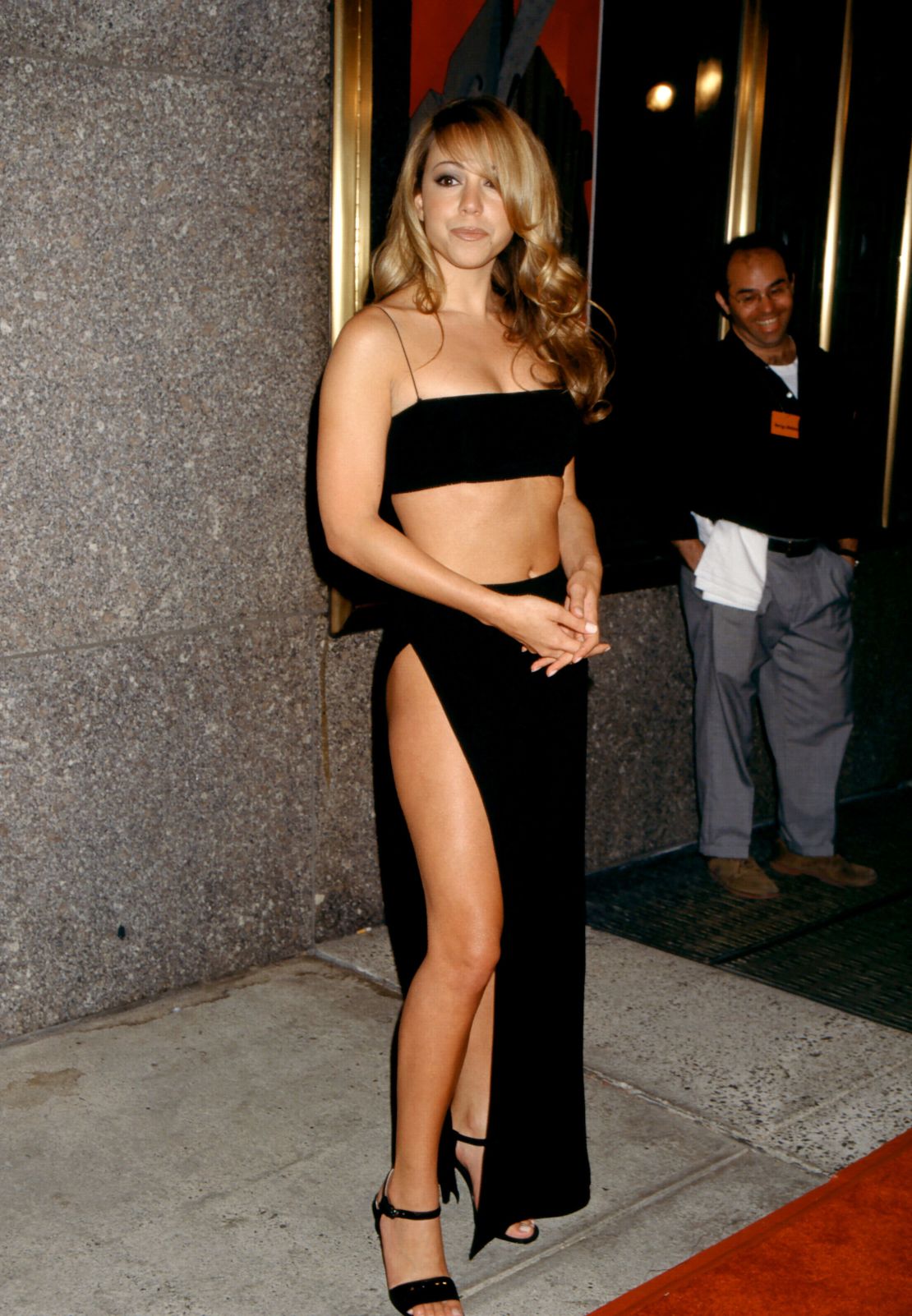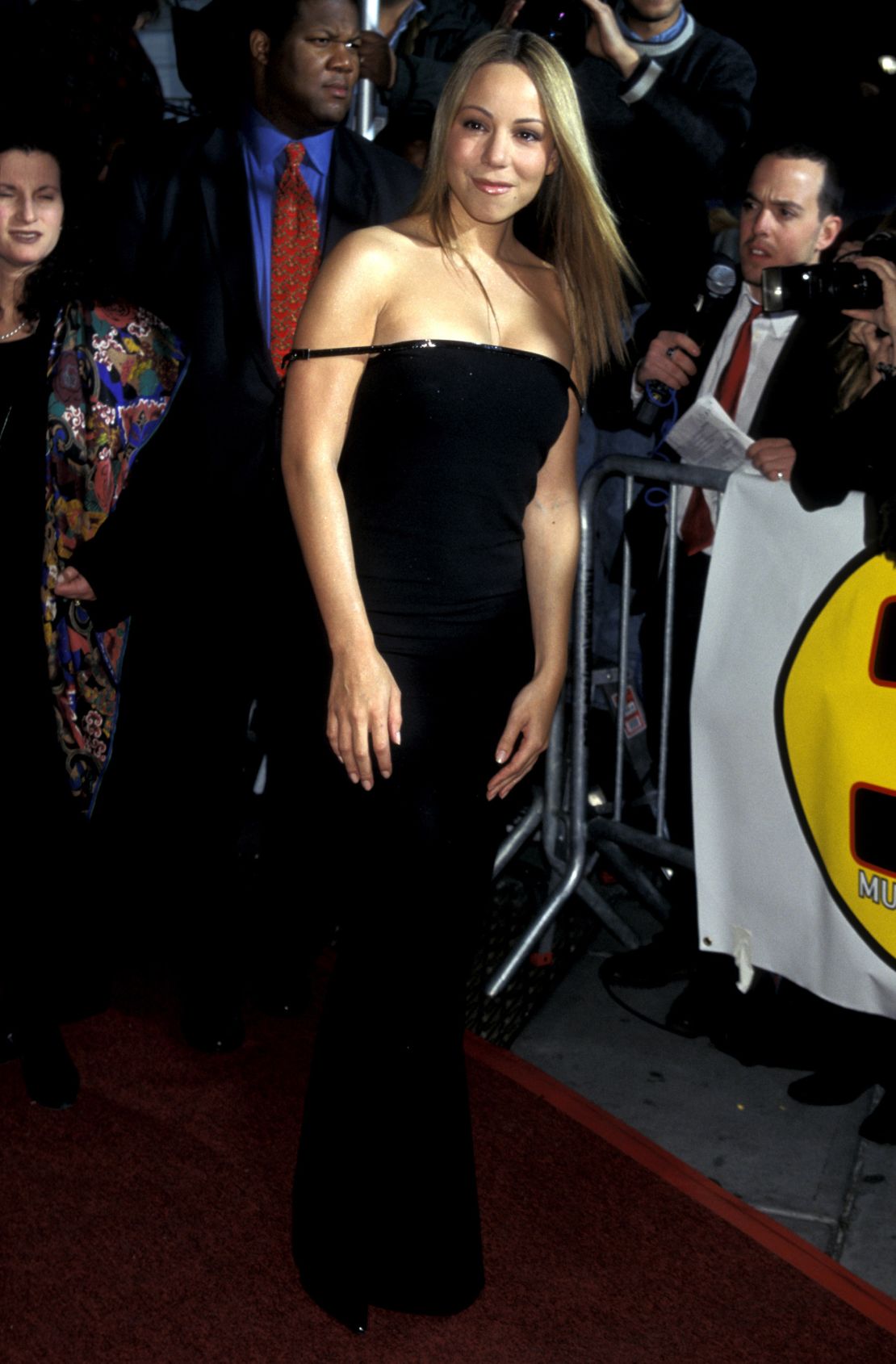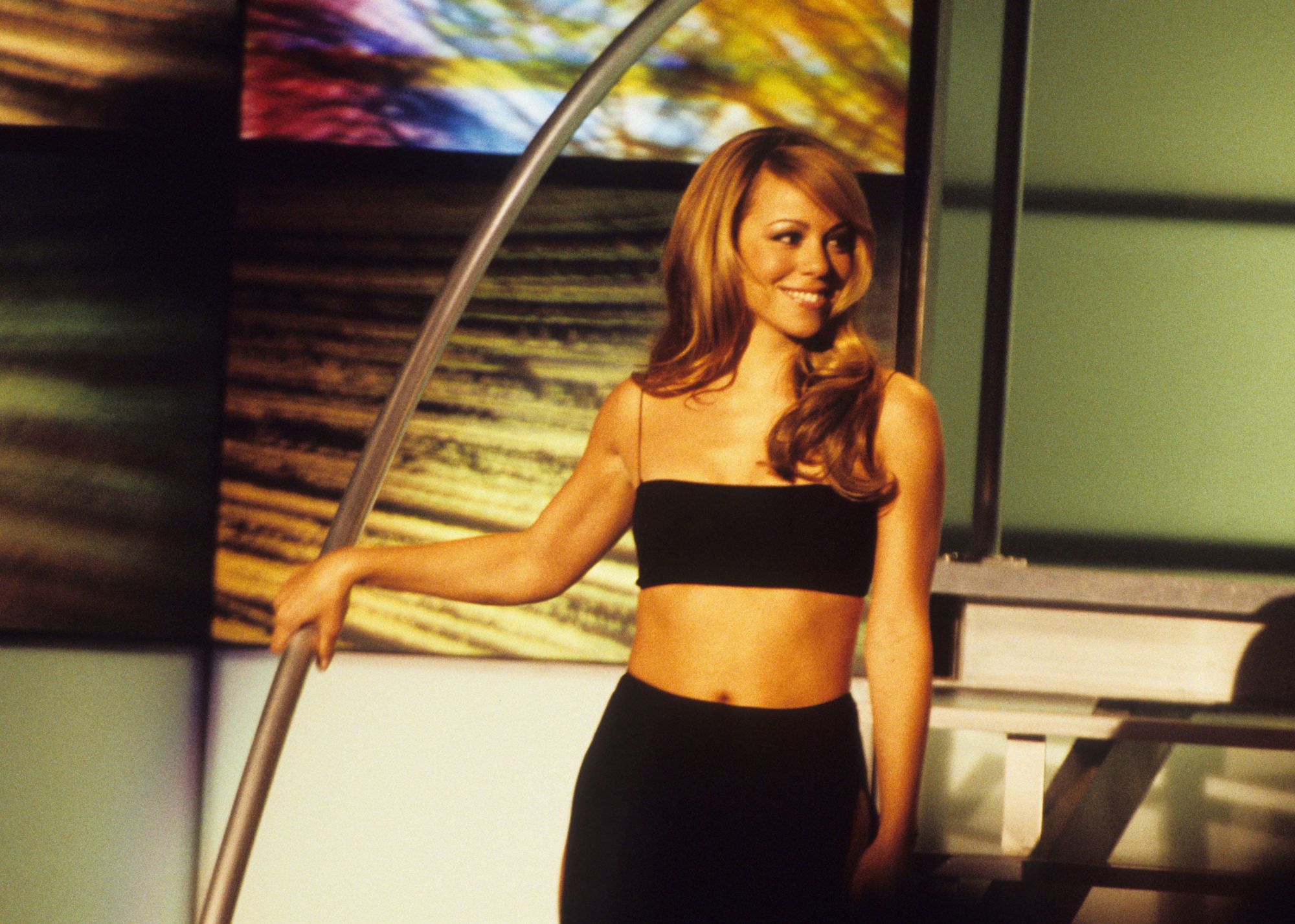Editor’s Note: Delving into the archives of pop culture history, “Remember When?” is a series offering a nostalgic look at the celebrity outfits that defined their eras.
In 1997, Mariah Carey found herself at a crossroads. Having just announced her separation from husband Tommy Mottola, CEO of her then-label Sony, would she repeat the winning formula behind five multi-platinum albums or risk it all by shattering the girl-next-door image?
She chose the latter, embracing a new R&B- and hip-hop-influenced sound and reinventing her image in the process. Leaving behind ballgowns and maxi dresses, she started dressing in miniskirts, midriff-baring tops and beige bikinis.
But if there was a single outfit that symbolized a newly liberated Mariah Carey – a pop diva stepping out from the shadow of a marriage that had “nearly smothered me to death,” as she wrote in her recent autobiography – it was the elegant yet risque two-piece she wore to the 1997 MTV Video Music Awards (VMAs). With this years awards taking place Sunday night, her outfit remains one of the most iconic looks to ever grace the event’s red carpet.

Her ensemble comprised a sleek black bandeau top and a skirt with a dramatic thigh slit. Though no designer has ever taken credit for the outfit, it remains a quintessential ’90s Mariah look and, as her first post-separation red carpet outfit, a masterclass in revenge dressing.
With the Spice Girls and Blackstreet turned heads on that years’s VMAs red with exuberant maximalism, Carey’s look spoke to the other end of the ’90s fashion spectrum: pared-down minimalism. At the time, designers including Helmut Lang, Jil Sander and Calvin Klein (whose fashion show Carey attended in 1994 dressed in a schoolgirl plaid skirt and cardigan) were moving away from 1980s rainbow palettes, opting for blacks, whites and neutrals as they traded puffy shoulders for body-conscious, elegant lines.
Just months after Klein promised there would be “no 80s” on his runway, Carey’s stripped-back VMA look also served as a rejection of the preceding decade, combining monochrome glamour with her newfound sensuality.
Fashion as emancipation
Carey’s VMAs outfit was depicted as a symbol of victory against both her ex-husband and his label’s control over her image. In her autobiography, “The Meaning of Mariah Carey,” the singer said Sony had been “resistant” to attempts to change her sound. Carey claimed she had been controlled to the extent that she was discouraged from wearing her hair straight, as it didn’t look like her natural hair, so she used her next album “Butterfly” (released shortly after the VMAs) as an opportunity to metamorphose.

The black two-piece ensemble was the red carpet sister to the similarly transformative outfits she had debuted just weeks earlier in music videos for “Honey” and its hip-hop infused remix. There, she had also opted for bandeau tops – in white and metallic browns – while her miniskirts featured an asymmetric thigh slit . Her curly ringlets were nowhere to be seen, replaced by glossy straightened hair.
It was with “Honey” that Carey was finally able to “explore creative and fashion influences without label restrictions,” she later wrote, allowing her to discover herself musically and stylistically. “I wanted to look glamorous, dangerous and badass, like a Bond girl,” she recalled, adding that she used Ursula Andress’ character from “Dr. No,” Honey Ryder, as inspiration. “And I finally had the freedom to access the right creative team to achieve the looks.”
The video stirred controversy at the time. The Bond-inspired storyline saw Carey playing a secret agent captured by – then escaping – a villain who some observers noted looked remarkably like Mottola. In interviews, Carey denied any connection between the two, but later said in her book: “The whole message in the ‘Honey’ video was that I was breaking free – although no one understood the insanity, toxicity and abuse I was living inside. They had no clue.”
In his 2013 memoir “Hitmaker,” Mottola dismissed claims that he had been controlling as “simply bulls***,” though he admitted it had been “absolutely wrong and inappropriate” for him to become involved with Carey in the first place. “There have been so many stories in the press about Mariah and me, with me being described as a Svengali, restrictive, controlling, and on and on,” he wrote. “Lots of crap. But I had to continue to take the hits because I was the chairman of Sony Music, so I remained above the fray and never responded.”
Regardless, Carey was reinventing herself – and fashion was central to the transformation. As she recalled on Oprah Winfrey’s show that year, the singer “wanted to be able to have different looks.” While she jokingly dismissed her “skimpy little ensembles,” her newly empowered wardrobe became synonymous with the emancipation of Carey.

Carey’s VMAs dress has also been described as a “revenge dress” joining a rich tradition of post-breakup looks – from the black off-the-shoulder Christina Stambolian dress Princess Diana wore the day her husband admitted his adultery to the sparkly sheer Alexander Wang bodysuit Bella Hadid sported in 2017 after splitting from The Weeknd.
But perhaps Carey’s embrace of a new daring, minimal wardrobe was less to do with vengeance, and more to do with self-love. It was a joyful celebration of independence as she reintroduced herself to the world on her own terms. And, looking back, she remains a shining example that life might not only be OK after a split – it might be better.
“The Meaning of Mariah Carey”, published by Andy Cohen Books, is available now and will be re-released in paperback on Nov. 2, 2021.



